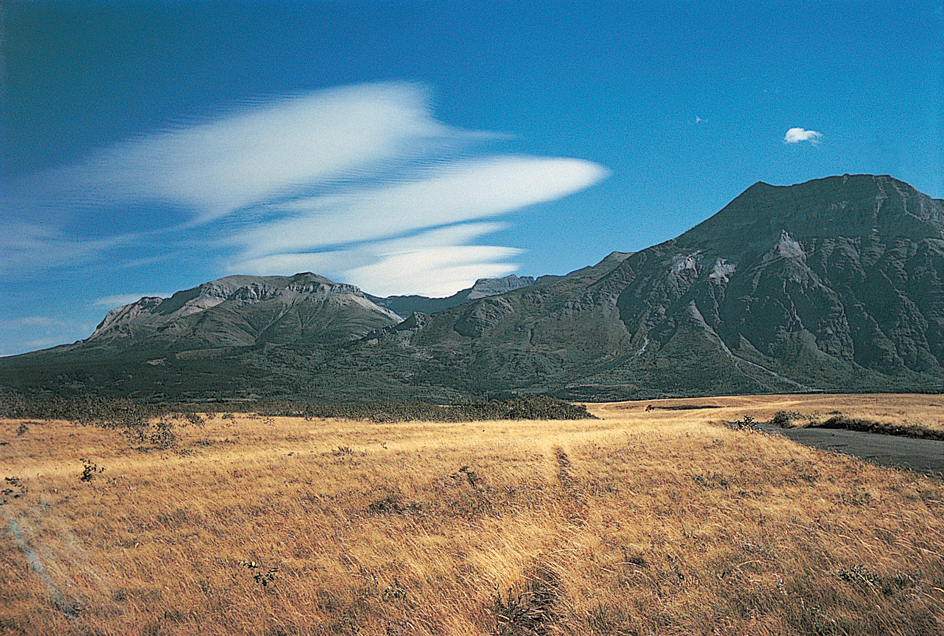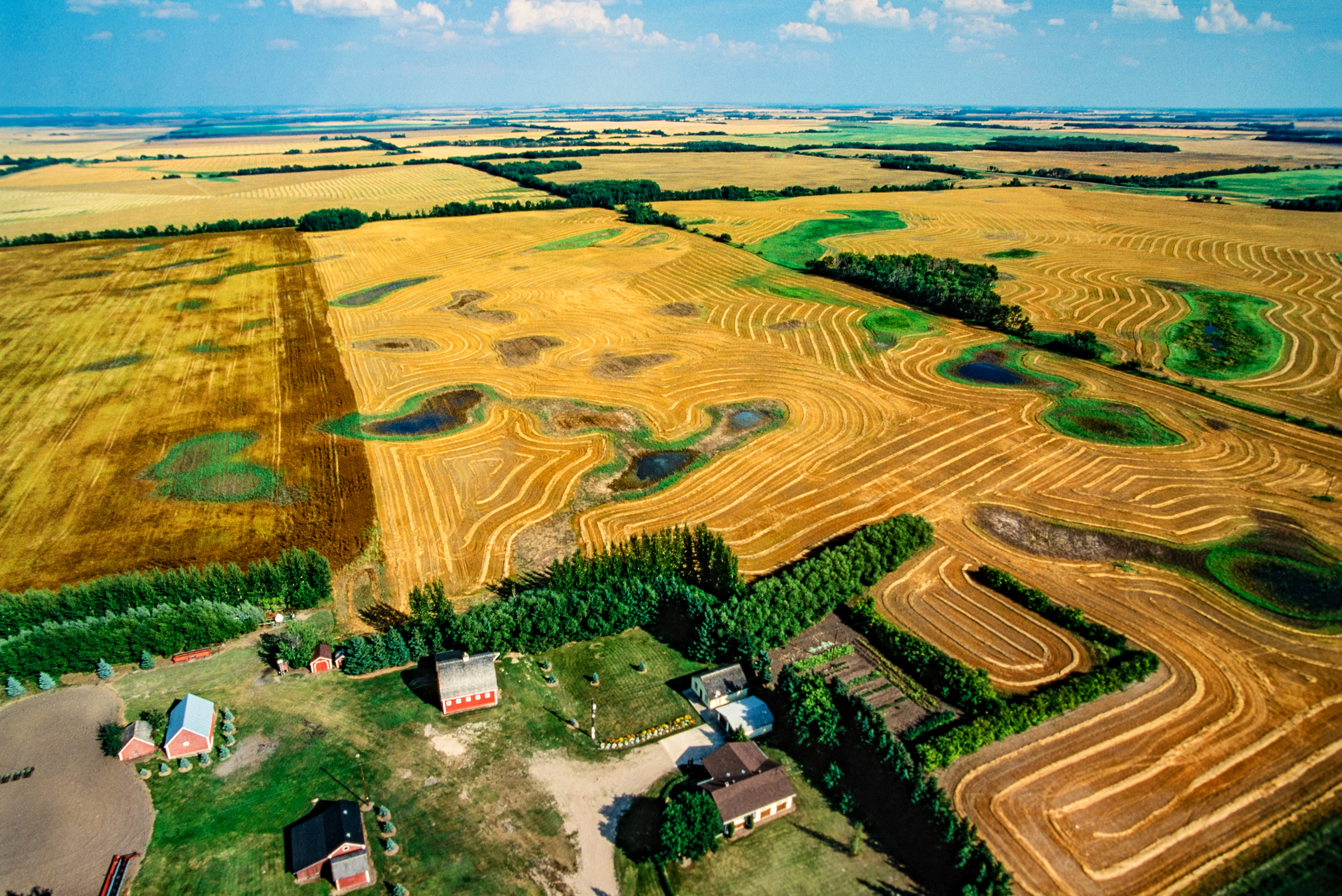Prairie is a region of flat or hilly land covered chiefly by tall grasses. The pioneers who first saw the flat prairies of the American Middle West described them as a “sea of grass.” The wind blew gentle waves in a green carpet of grasses. In some places, the grasses grew taller than an adult. Today, corn and wheat fields cover most of the prairie. Few prairies remain untouched.

The North American prairie extends from central Texas to southern Saskatchewan. It includes most of Oklahoma, Kansas, Nebraska, Iowa, Illinois, South Dakota, and North Dakota, and parts of other nearby states and provinces. Alberta, Saskatchewan, and Manitoba are called the “Prairie Provinces” of Canada. Other prairies include the Pampas of Argentina, the veld of South Africa, the Canterbury Plains of New Zealand, and parts of Hungary, Romania, Russia, and Ukraine.

Climate and soil.
Prairies have hot summers, cold winters, and moderate rainfall. Summer temperatures may reach well over 100 °F. (38 °C) and winter temperatures may drop as low as -40 °F. (-40 °C). Tropical grasslands, where temperatures vary less from summer to winter, are called savannas (see Savanna ). Most prairies receive from 20 to 35 inches (51 to 89 centimeters) of rain a year–less than forests get but more than steppes (regions of short grasses) receive. Most of the rain falls in late spring and early summer.
Prairie soils have especially deep, dark, fertile upper layers. Such soils result from the growth and decay of deep, many-branched grass roots. The rotted roots hold the soil together and also provide a source of food for living plants. The richest, blackest prairie soils are called chernozems. This term comes from a Russian word meaning black earth.
Life on the prairie.
The thick cover of grasses of the American prairie consists of many species. Each kind of grass grows best in a certain kind of environment but also occurs in other places. For example, slough grass is found in low, marshy ground. Big bluestem, Indian grass, switchgrass, and wild rye thrive in fairly moist areas. Drier areas have little bluestem, dropseeds, June grass, blue grama, needlegrasses, and side oats grama. In the moist eastern parts of the prairie, near forested areas, the grasses may grow 6 feet (1.8 meters) high or even taller. On the dry western edge, the grasses grow only about 2 feet (61 centimeters) high. There, the prairie gradually changes to a steppe.
Many kinds of nonwoody plants other than grasses also grow on the prairie. Hundreds of species of flowers add splashes of yellow, orange, red, purple, and other colors to the sea of grass. Many of these wildflowers belong to the composite family or to the legume family of plants. Composites that grow on the prairie include such flowers as asters, blazing stars, coneflowers, goldenrods, and sunflowers. Prairie legumes include clovers, psoraleas, and wild indigos. A purplish phlox and an orange-flowered milkweed called butterfly weed also color the prairie.

Cattails and sedges rustle in the breeze in marshy areas and near the lakes and ponds of the northern prairie. Some woody shrubs, such as the prairie rose, grow among the prairie grasses. A few trees, including cottonwoods, oaks, and willows, grow in river valleys on the prairie.
Many animals feed on the leaves, roots, and seeds of prairie plants. Some of these animals, such as jack rabbits, deer, and pronghorns, use their speed to escape from enemies. Others, including mice and prairie dogs, hide in underground burrows. Such birds as blackbirds, grouse, meadowlarks, quail, and sparrows build their nests in a thick cover of plants. Until the late 1800’s, large herds of bison–commonly called buffaloes–roamed the American prairie.
Coyotes, foxes, and skunks feed both on smaller prairie animals and on certain plants. Badgers, hawks, owls, and some species of snakes eat meat almost entirely. Insects–especially grasshoppers and leafhoppers–and spiders are also common on the prairie.
The soil of the prairie contains millions of tiny organisms that feed on dead plants and animals. These organisms include bacteria and fungi as well as such soil animals as centipedes, earthworms, mites, and nematodes. All of them speed the process of decay among the dead plants and animals. This decaying process provides the soil with food for future generations of prairie plants.
